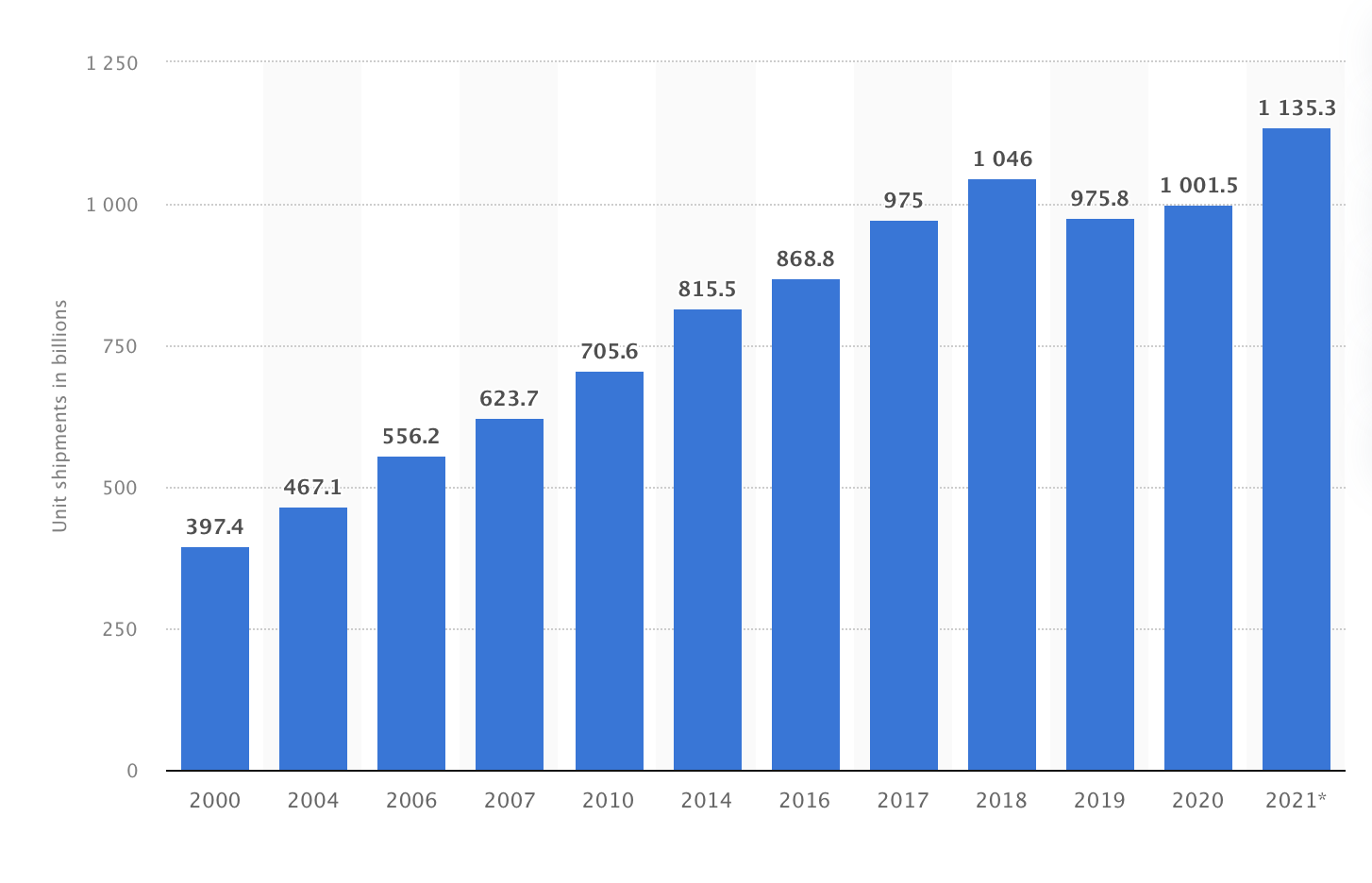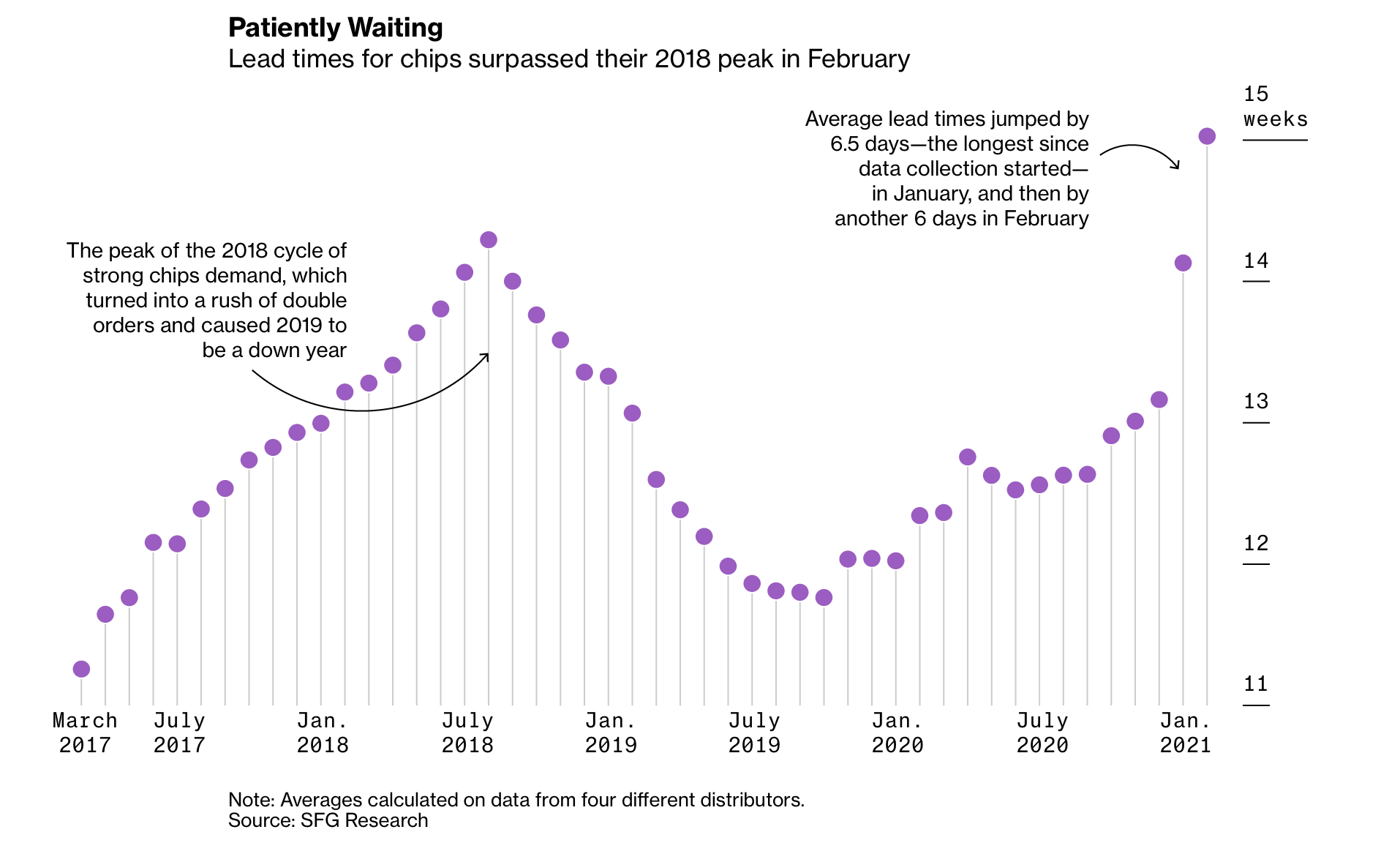Inside the laptop, computer or smartphone you’re reading this article on are small electrical components called semiconductors – more commonly known as ‘chips’.
These chips have become integral to our modern lives. As well as IT hardware, chips are found in vehicles and a wide range of consumer electrical items. As anyone who has tried to buy a new car or a PlayStation 5 recently will be acutely aware of, these chips are in short supply.
How did this happen and what does the global chip shortage mean for your business?
What caused the shortage?
It’s a simple case of supply and demand economics. Back in 2018, chip shipments were at their peak – some 1,046 billion units according to Statista Research. With an abundance of chips in the market, production reduced in 2019 with the expectation that the market would return to normal in 2020. But, when the pandemic hit, things started to get much more complicated, creating a perfect storm for chip manufacturers.
Economists as well as the electronics and automotive industry anticipated people would spend less money on non-essential items and less time driving as lockdowns took hold, so the chip industry prepared for low demand.
However, with more people stuck in their homes, and not able to spend money on going out to socialise, demand for home entertainment skyrocketed. Manufacturers of TVs and video game consoles responded by buying up as many chips as they could get their hands on. This put those chip manufacturers, who had already put the brakes on production, on the back foot.
With the majority of major manufacturers based in Asia, the problem was compounded by pandemic-related restrictions on the free movement of goods, services and labour so the industry’s delicately balanced ‘just-in-time’ supply chains collapsed.
Semiconductor unit shipments worldwide from 2000 to 2021
(Technology & Telecommunications Hardware)
 *
*
What’s happening now?
Fast forward 18-months and the effects of the shortage are still being felt. The industry was hit with more bad luck when winter storms shut down several semiconductor factories in the US and a fire at a Tokyo plant also exacerbated delays.
Consequently, figures from SFG Research showed that lead times for chip distribution jumped by six-and-a-half days in January 2021 – the biggest jump on record – followed by a further six days in February.
**
Part of the solution has been to build new factories with both the US and EU offering incentives to chip firms, but new sites remain extremely expensive and also require a well-trained workforce. Meanwhile, shipping costs have continued to rise dramatically throughout the pandemic adding more pressure to the situation. Tech giants like Intel and IBM are now not expecting normal supply levels to return until well into 2022.
What does it mean for my business?
Sourcing any kind of new IT hardware is going to continue to be a challenge for the months ahead for businesses of all sizes.
However, it’s not impossible – businesses just need to be flexible and plan ahead. This means placing orders early, being prepared to wait and acknowledging that last-minute replacements for old or specialised hardware will be difficult.
At Intercity Technology, we are working closely with our customers to help them anticipate demand effectively and ride-out the shortage. For many office-based businesses that are now starting to embrace hybrid home-office working, this has meant thinking ahead to ensure personnel returning to the office in recent weeks have the equipment they need.
It also means taking a long-lens approach and plotting out potential pinch points. For example, for our customers in the professional services, this is traditionally the time of year when graduate trainee programmes start. All these new hires need laptops and phones so orders had to be placed much earlier in the year than they normally would.
We are certainly not immune from the effects of the chip shortage, but our long-established supplier relationships have made it slightly easier for us to provide customers with the kit they need. We have also been helping businesses to maintain continuity with our IT support services which minimise any disruption and help to ensure our customers’ teams receive a seamless experience.
We have entered a new era of work with businesses embracing a hybrid working model. Bridging the gap between the central office and any number of remote locations isn’t easy, as traditional in-house IT teams often lack the reach necessary to support their remote colleagues. Businesses used to exclusively rely on in-house IT teams to manage their IT infrastructure. However, with employees now spread out across multiple locations, IT teams are feeling the strain.
Hybrid technical support is a support model that's fast-growing in popularity. It seeks to address these challenges by providing businesses with additional talent, infrastructure, and assistance. Supplementing in-house IT teams with the experience and resources of a managed service provider (MSP).
If managing a distributed workforce wasn't difficult enough, throw some hardware supply chain issues into the mix and the IT Support function is at risk of failure.
Get it touch today to find out how we can help ensure you get the specialised hardware you need as your team starts returning to the office.
Source
* Statista
** SFG & Bloomberg
Subscribe to our newsletter
YOU MAY ALSO BE INTERESTED IN:


